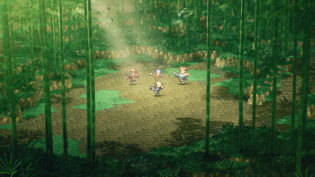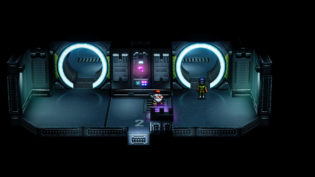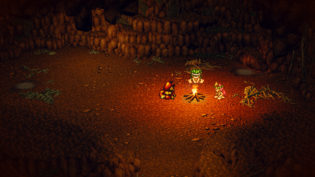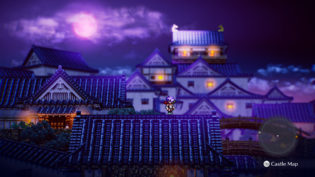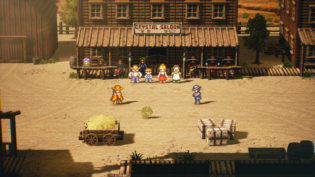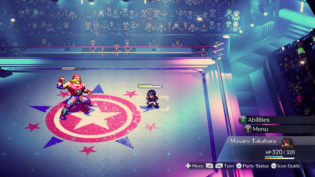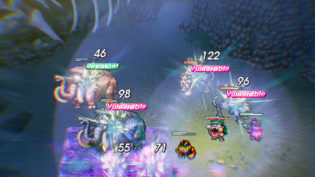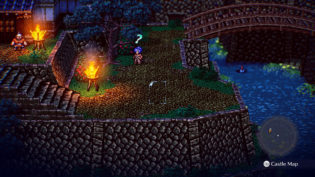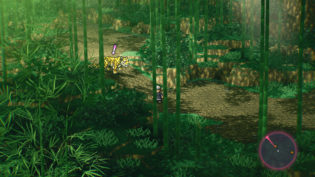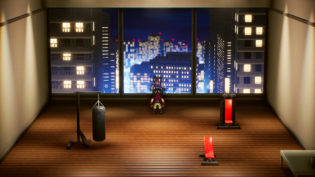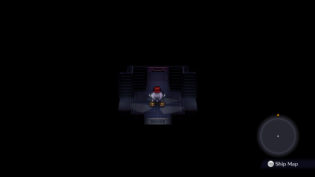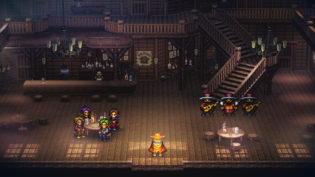Live a Live (stylized as LIVE A ƎVI⅃) has been a project I’ve heard a lot throughout the years. It was a jRPG from Square released in 1994 – that’s the same year as Final Fantasy VI, a year after Secret of Mana and a year before Chrono Trigger. But, just as Seiken Densetsu 3 (later officially and wonderfully remade under the title Trials of Mana), it was originally a Japanese-only title, so a huge amount of international audience only heard about it without good means to experience it for themselves. The concept for the game sounded wild – several unrelated independent stories with unique setting and gameplay mechanics in one package. All produced by Square at the top of their game and with the soundtrack from Yoko Shimomura, who’s soundtracks for Super Mario RPG and Parasite Eve would become much beloved just a couple of years later.
Unexpectedly, last year a “HD-2D” remake of the title was announced, first exclusively for Switch and now available on more platforms including PC, so I could finally experience this unbelievably sounding title for myself. And it’s genuinely hard to put into words just how surprising the experience was.
While it is absolutely correct to call Live a Live (both the original and this remake) a jRPG and it has a lot of mechanical similarities to the titles Square (now Square Enix) were producing at the time, vast majority of time in the game doesn’t actually feel like a jRPG. You have 7 separate campaigns to choose from – you can start with either, you can save at any point and you can stop playing the campaign at any point and switch to another and later return to the one you’ve not finished. Each story is 100% independent (although you will notice some recurrent themes) and covers seven separate time periods, all of which play almost completely differently. And I do mean it – completely differently.
For example, playing as a shinobi in the time preceding the Meiji Restoration you will have a gigantic level to explore, where you have to achieve several goals almost in any order. It’s almost a metroidvania adventure and on top of that, you can stealth and avoid encounters with the player character noting lives you take unnecessarily during this mission, which can lead to different outcomes. Playing as a robot in the far future, you will adventure through an Alien-like storyline with zero combat encounters and mostly story-driven scenes. While being a fighter in “present day” is presented as playing a single-player campaign of a fighting game. Every time you start playing as a new character it’s a surprise – you cannot even begin suspecting what wild new ideas and turns the game would take and it’s a joy every time.
When more conventional jRPG aspects do take place, they’re recognizable (if you’re familiar with classic Square catalogue) but also unique and interesting. For most of the game, the encounters, if they even exist, are not random and are visible on screen, just like in Chrono Trigger. When you get into an encounter, you can move your characters on a grid before selecting an action to do. And interestingly the game completely drops any sort of generic “attack” command, with every offensive or defensive options being an “ability” you can select from the list. Abilities may have charge times or even negative effects on the character using them and have certain attack patterns, similarly to chess (or as developers apparently called it “real-time shogi”). Yet otherwise they don’t use up any special “magic points” of any kind. Furthermore – all characters always start combat at full health, no matter what their health was before. Oh and there are no shops or money in a conventional sense either and even experience gain is unconventional. All of the ideas are very forward thinking for 94 and some feel fresh even today.
Sadly, the game didn’t age gracefully in everything. Some of the seven main campaigns have brilliant ideas but flawed execution. And the final sections of the game, that get unlocked once you’ve completed the seven stories, are easily the weakest and least fun bits of the game as they suddenly turn into a very generic and quite poorly made jRPG, full of the worst ideas from the era. It’s not enough to outright kill the momentum, especially if you’re not trying to get all secrets and find all endings (yes there are multiple), but it’s genuinely surprising how bad some things get. And that the remake left these aspects, as far as I understand, completely unchanged instead of reworking them to be better. Especially since I can’t say that those closing hours of the game are even doing anything interesting that’s worth playing. Seven independent stories are alone worth the experience. I can see how some of the things that the ending parts do could’ve been fresh for the time, but the execution of both the story and gameplay is very poor and all of these ideas were simply done much better since.
Yet, while the ending hours with the game did drag a bit due to a drop in quality, it didn’t make me love Live A Live any less. And, as mentioned, I fully believe that it’s worth getting the game just for the sake of going through the seven main independent stories. So if you get bored by the ending bits, you might as well just drop it, it won’t change your perception of the game’s events in any way. I wonder what the landscape of RPGs could’ve been if Live A Live did get released internationally in 94 and by some chance have gotten popular… I bet titles like Undertale would’ve been developed much earlier than they did, that’s for sure. Still, even in 2023, Live A Live in this remade form is fresh enough to inspire developers to do something unexpected and exciting.


